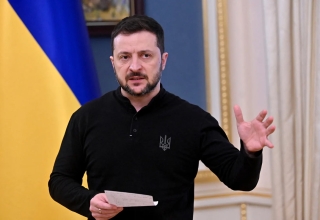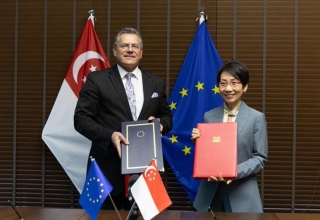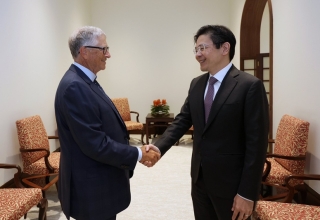
Last updated on December 15th, 2022 at 01:34 pm
An astounding 59% of the world’s population or close to 4.7 billion people live in the Asian continent. Thus, with a wide range of nations and cultures, Asia has one of the biggest and most diverse economies. Asia’s diverse currencies reflect regional economic prosperity and expansion, while market volatility and stability characterise many global economies. This article examines the 12 Strongest Currencies in Asia based on current 2022 data.
1) Kuwaiti Dinar
The official currency of Kuwait is not only the strongest in Asia but also the one with the highest value globally. In fact, the Kuwaiti Dinar costs more than the Euro, British Pound, and US Dollar combined! In the opposite direction, one American dollar only buys 0.30 Kuwaiti Dinars, or the equivalent of $3.25 in American dollars. This oil-rich country uses its resources to create one of the most valuable currencies in the world.
2) Bahraini Dinar
In addition to being one of Asia’s strongest currencies, the Bahraini dinar is also closely followed by Kuwait as the second-most valued currency in the world. One local dinar is equivalent to $2.65 in dollars, making it one of the most sought-after currencies in the area. The Bahraini Dinar, introduced in 1965, took the place of the previous Gulf Rupee. Bahrain’s economy gains from robust industries in banking, finance, building, and oil exports. 70% of the revenue for the Bahraini government comes from petroleum alone.
3) Omani Rial
One Rial in Oman is roughly equivalent to $2.60 in US dollars, almost exactly matching the Bahraini Dinar’s value. Until the Omani Rial took its position as the official currency in 1972, Oman historically used the Saudi Arabian Rial. Oman is among the Middle East’s oldest Arab countries and has one of the highest income economies in the world thanks to its oil resources.
4) Jordanian Dinar
The Jordanian dinar, which has been in use since 1950, is the fourth most valuable and stable currency in Asia. Jordan’s currency is especially highly coveted in nations with weaker economies, where one Dinar is equal to $1.41 in US dollars. Just a few thousand Jordanian dinars can be worth millions in some African countries. In addition to Jordan, the Palestinian West Bank also makes extensive use of the dinar.
5) Brunei Dollar
Despite having a population of approximately 460,000, Brunei is home to one of Asia’s strongest currencies. The Brunei Dollar, which was introduced in 1967 and is equivalent to the Singapore Dollar (1 Brunei Dollar = 0.73 USD), gives the nation advantageous access to international markets that other tiny countries do not. The Monetary Authority of Brunei Darussalam is responsible for managing monetary policy and distributing the currency, which entered circulation in 1967. The country’s oil exports have had a significant positive impact on the value of the Brunei dollar. Brunei has strengthened its position as a thriving hub for international travel.
6) Singapore Dollar
One of the economies with the quickest growth rates in the world, Singapore serves as a significant trading and investment destination for several overseas investors. Since its debut in 1967, the Singapore Dollar (= 0.73 USD) has established itself as one of Asia’s most sought-after currencies. Singapore has established itself as one of the most lucrative global trading hubs in recent years. In the nation, numerous international corporations have operations. The currency’s worth has increased due to the robust economy.
7) Azerbaijan Manat
The Manat of Azerbaijan is presently worth 0.59 US dollars. The currency of Azerbaijan has been comparatively stable in recent years and is still one of Asia’s most widely used and resilient currencies. In the post-Soviet era, the country’s shift to an oil-based economy significantly strengthened its economic situation and increased the value of its currency.
8) Turkmen Manat
Turkmenistan switched from the Russian ruble to the Manat on November 1, 1993. The Turkmen and Azerbaijani words for the Soviet ruble were manat. The economy of Turkmenistan is said to be expanding quickly. The nation is proud of its abundant oil and gas reserves, and through intensive farming in irrigated areas, it has been able to turn its desert interior into a top cotton and wheat producer. The Turkmenistan Manat, which is worth USD 0.29, may be distributed by the Central Bank of Turkmenistan.
9) Israeli Shekel
Israel’s Shekel, which replaced the previous iteration in 1986, is currently in its second iteration. This Israeli money is accepted throughout the occupied Palestinian areas in addition to Israel. Israel has the 29th largest economy in the world and is one of the most advanced countries in the Middle East and Asia. The Israeli Shekel now costs 0.24 euros or 0.29 dollars.
10) Saudi Riyal
Given the wealthy nation to which it belongs and the Saudi Riyal’s position as one of Asia’s strongest currencies, this is not surprising. One of the largest oil reserves in the world is found in Saudi Arabia. To lessen its reliance on oil, the nation has recently attempted to diversify its economy. In order to promote international travel and trade, it has also loosened its regulations over time. A Saudi riyal is worth 0.27 US dollars.
11) UAE Dirham
In the United Arab Emirates, there is a currency called the Emirati dirham that is made up of 100 fils. It was introduced on May 19, 1973, to replace the riyals of Qatar and Dubai. In the entire Arab world, the UAE is home to the second-largest economy. The country’s economy is mostly dependent on oil, despite numerous efforts to diversify it. The value of one Emirati dirham is 0.27 USD. The nation’s monetary policy is managed by the Central Bank of the United Arab Emirates.
12) Qatari Riyal
In 1966, the Indian rupee was officially replaced by the Qatari riyal. The low rate of inflation and recent stability of the Qatari Riyal are credited with raising its value. The Qatari Riyal, abbreviated QR, is divided into 100 dirhams. Petroleum and liquefied natural gas are both important to the nation’s economy. These two resources account for 60% of Qatar’s GDP, 85% of export profits, and more than 70% of all government income. The money, which has a USD 0.27 value, can only be distributed by the Central Bank of Qatar.























